What is Water Softener Resin?
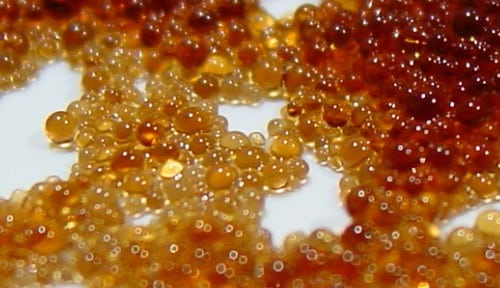
Shop Our Products
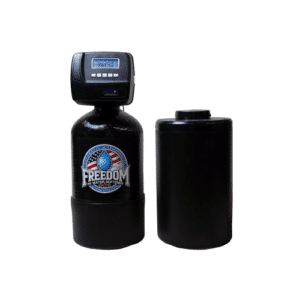
Freedom RV Water Softener System
Specifically for RV and fifth-wheel owners, this high-quality system guarantees your RV’s water is pure,
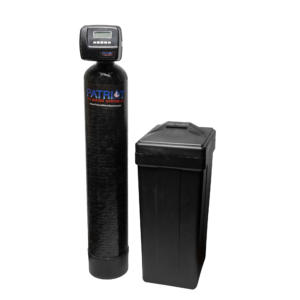
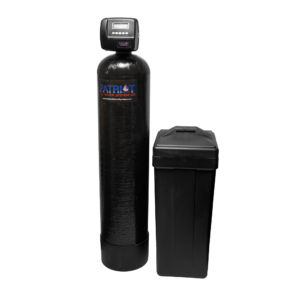
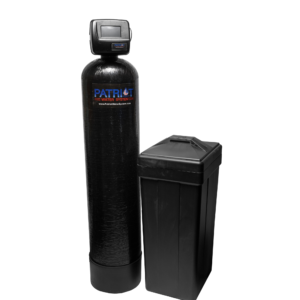
Water softener resin acts like a magnet for the minerals found in hard water, blocking them before they can reach your home’s pipes and appliances.
What is Resin?
Water softener resin consists of tiny polystyrene beads that range from between 0.3 and 1.2 millimeters in diameter. These beads look like amber-colored sand and fill up most of your water softener tank.
The two main types of water softener resin that make up most of the market are gel and macroporous resins. Gel resin beads are more common in residential systems due to their lower cost and reliable performance.
Macroporous resin, while more expensive, handles hard water better and often lasts longer in homes with high chlorine levels.
How Resin Works
The resin bed softens water through a process called ion exchange, where millions of tiny beads act like microscopic filters. Each bead has a negative charge which allows it to capture positively charged calcium and magnesium ions from your water. As these hard water minerals become trapped, the beads release sodium ions in their place, transforming hard water into soft water.
Think of resin beads like tiny trading posts. Each bead can hold onto a specific amount of hardness minerals before it needs regeneration. Most residential water softeners can process between 20,000 and 30,000 grains of hardness before the resin bed requires regeneration with salt. You’ll need to figure out what grain capacity your home needs before buying a water softener. For more on selecting a water softener, check out these 6 tips.
The amount of grains that a water softener resin bed can hold is known as grain capacity. Some units can exceed a grain capacity of 96,000 grains.
A standard 1 cubic foot of resin contains millions of beads, each covered in microscopic exchange sites. These sites actively grab calcium and magnesium ions as water passes through the tank.
The more exchange sites available, the more efficient your water softener becomes at removing hardness minerals.
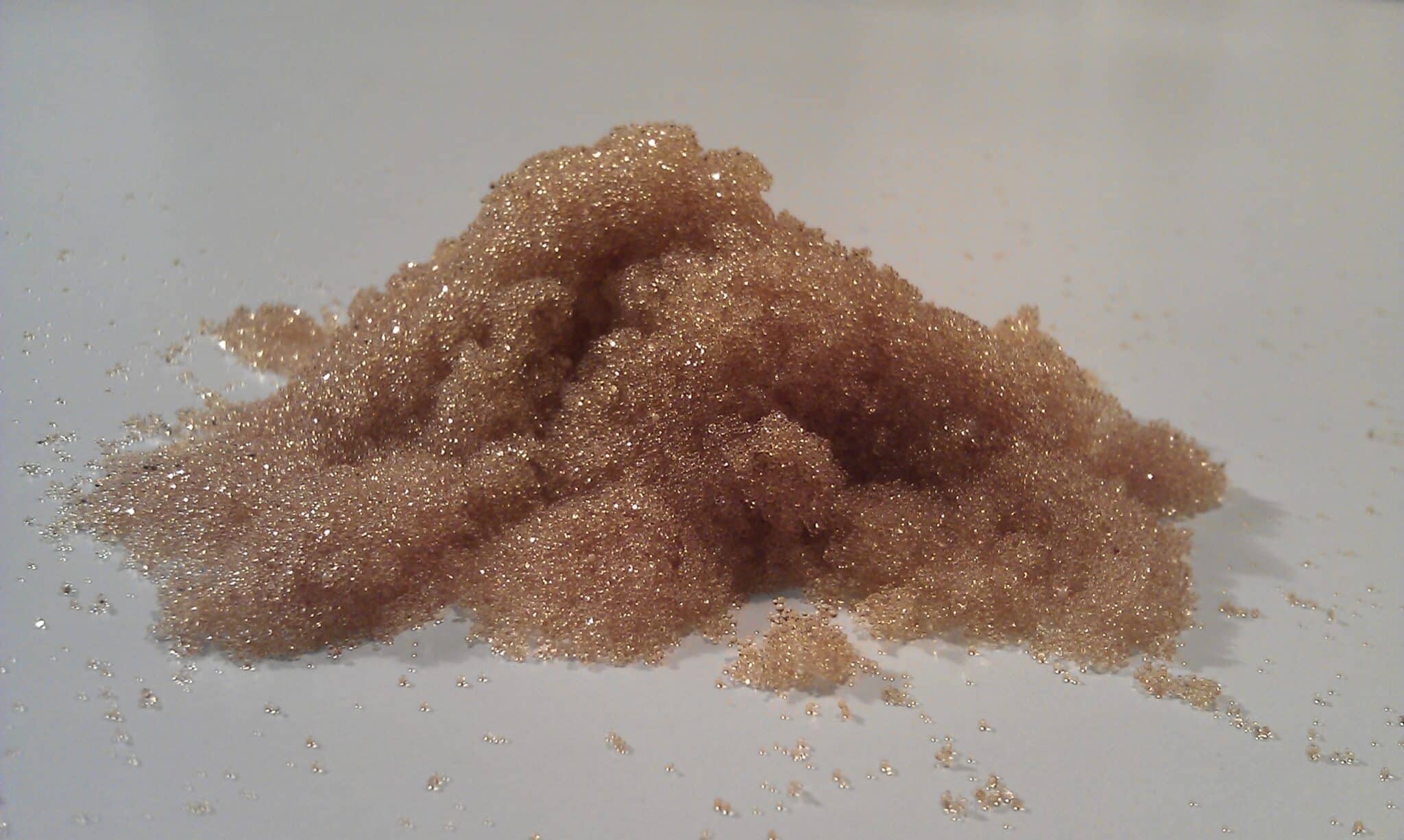
Has My Water Softener Resin Gone Bad?
Here are common warning signs that your water softener resin needs attention
- System is over 10 years old
- Spots appearing on dishes after washing
- Scale buildup returning to faucets and fixtures
- Soap doesn’t lather well during washing
- Dry, itchy skin or hair after showering
- Hard water test strips show high mineral content
- Water pressure has decreased
- Strange taste in your water
- Your softener regenerates more frequently
The more signs you notice from this list, the more likely your resin needs replacement. Simple tests like checking water hardness levels after regeneration can confirm if your resin is failing.
Age remains the most important factor in resin health. Most resin beds show a sharp decline after 8-10 years.
Resin Maintenance and Care
Regular maintenance helps your water softener resin last longer. Clean your resin bed with resin cleaner every 3-4 months to remove built-up iron and other minerals.
Water quality dramatically impacts the lifespan of your resin bed. Minerals like chlorine and iron levels in your water as well as how much water you use can increase or decrease its lifespan. High chlorine levels can break down resin faster, while excess iron coats the beads and reduces their ability to soften water.
Check your brine tank monthly to prevent salt bridges from forming. These salt crusts prevent proper regeneration and place unnecessary strain on your resin bed.
Making the Most of Your Water Softener Resin
Your water softener’s resin bed acts as the heart of your system. Knowing how it works helps you spot problems early on, letting you avoid any additional repairs.
Replacing resin at the right time prevents damage to your water softener and keeps your system running efficiently. Most homeowners can save money by replacing worn resin rather than buying a new system.
Learn More | When to Replace Your Water Softener
Moving Forward with Your Water Softener
Follow these steps to maintain your water softener resin:
- Check salt levels monthly
- Clean the brine tank every six months
- Test water hardness quarterly
- Schedule professional inspections yearly
- Use high-quality salt products
- Monitor water usage patterns
Watch for these signs that indicate you need professional help:
- Multiple regeneration cycles in one day
- Sudden changes in water pressure
- Unusual noises during regeneration
- Salt usage increases dramatically
- Water remains hard after regeneration
A proper maintenance schedule helps your resin bed last longer. Track your system’s performance and keep detailed records of any changes or repairs. Contact an expert like Patriot Water Systems if you have any additional questions.
Frequently Asked Questions
Is it worth replacing resin in a water softener?
Replacing your water softener resin costs about one-third the price of buying a new system. A resin replacement brings your softener back to peak performance and adds 10-15 years of life to your system. Most homeowners find resin replacement more cost-effective than purchasing a new unit.
What is the resin in a water softener?
Water softener resin is made up of small polystyrene beads designed for ion exchange. These amber-colored beads work by attracting and capturing calcium and magnesium while releasing sodium ions. This simple process transforms hard water into soft water as it flows through your system.
How often do you need to change the resin in a water softener?
Water softener resin typically lasts 10-15 years in normal conditions. However, certain factors can reduce resin life: high chlorine levels might cut it to 8 years, excess iron can reduce it to 5 years, and heavy water usage speeds up deterioration. Testing your water quality helps determine when replacement becomes necessary.
Can I replace water softener resin myself?
Yes, you can replace water softener resin yourself. While DIY resin replacement saves money, it requires mechanical knowledge and specific tools. The process involves removing old resin, cleaning the tank thoroughly, and carefully loading new resin without damaging internal parts. Many homeowners choose professional installation to avoid potential system damage.
Share:
Talk to A Water Quality Expert
Shop Our Products

Freedom RV Water Softener System
Specifically for RV and fifth-wheel owners, this high-quality system guarantees your RV’s water is pure,




How to Install a Water Softener In an RV in 20 Minutes
To install an RV water softener, first choose the right spot near the main water line, turn off the water supply, attach the bypass valve, connect the inlet hose, add salt, and then flush the system to check for leaks. This guide will walk you through each step in detail to ensure your portable water softener is set up correctly and efficiently.
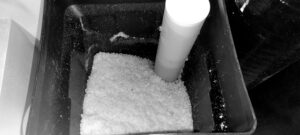
The 5 Stages of Water Softener Regeneration
The water softener regeneration process consists of five crucial stages: fill, brine, slow brine rinse, backwash, and fast rinse. Understanding these stages can help you maintain your water softener’s performance and extend its lifespan.

How Long Do RV Water Softeners Last (2024)
RV water softeners typically last between 7 to 10 years, depending on factors like quality, frequency of use, maintenance, and water hardness levels. Proper care can extend their lifespan, ensuring soft water for your travels. For more details and maintenance tips, read our full guide on enhancing your RV water quality.
Join Our
Newsletter
Get the latest information, and exclusive offers on water softening and purity solutions
